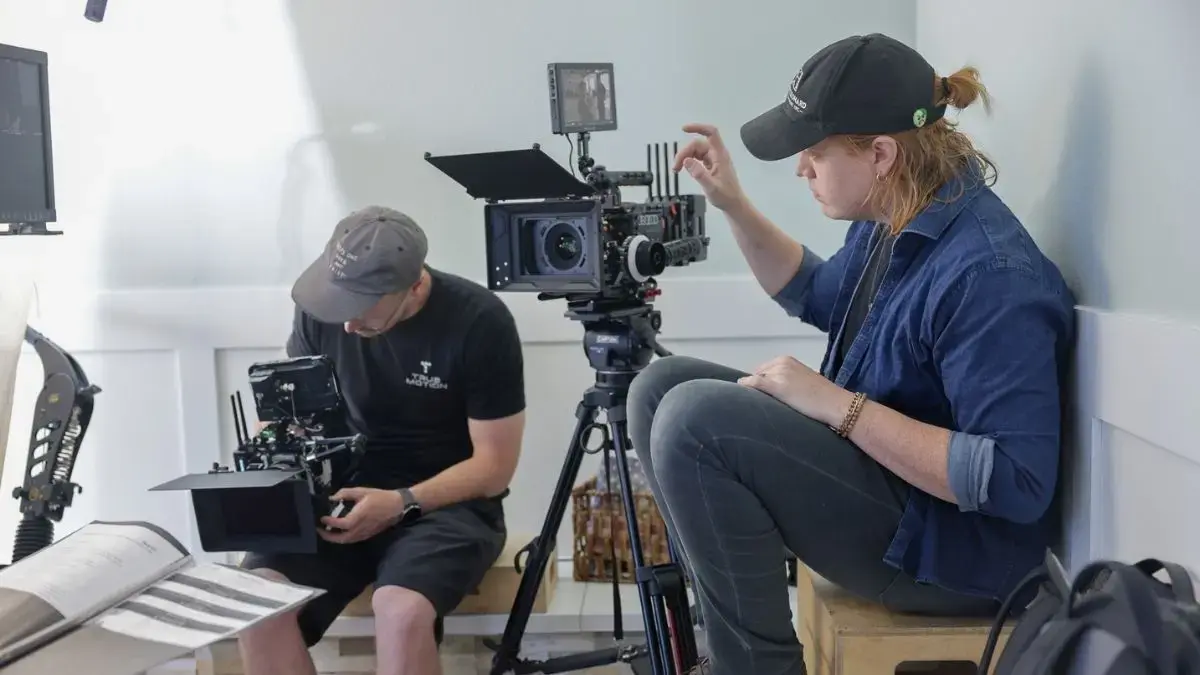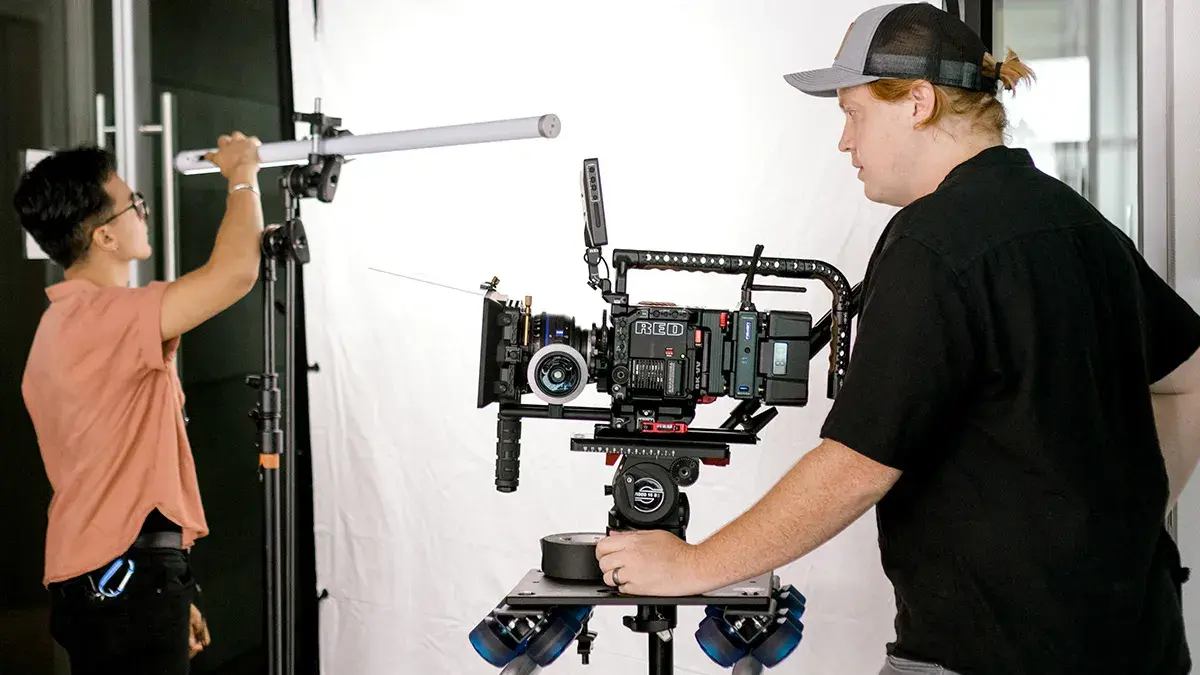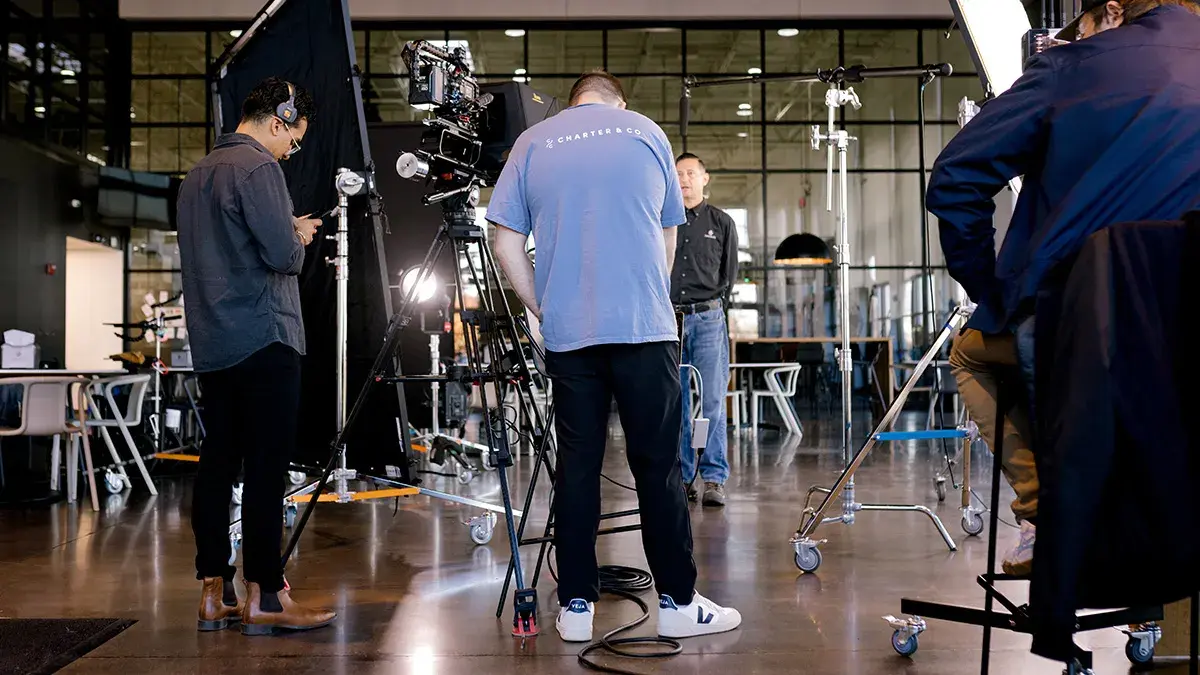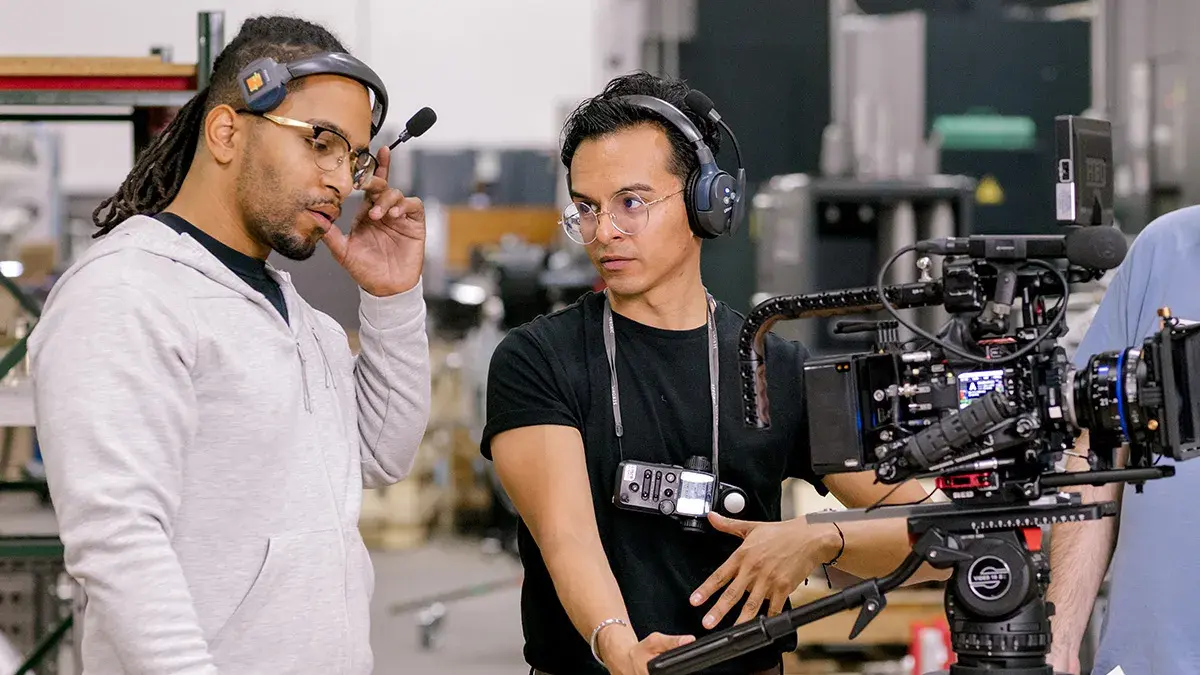1 min read
What is Video Production? And How Do You Make It Work for Businesses?
What Is Video Production and Why Is It Important? Video is absolutely everywhere, with a drastic increase in the amount of video content consumed...
▶ Video Strategy & Discovery
A video marketing strategy will keep your production cohesive and on schedule.
▶ Creative Treatments, Scripts & Storyboards
Bring your vision to life with professional scriptwriting and storyboarding services.
▶ Production Preparation
Prepare for your corporate video with professional video production services.
▶ Full Service Filming Days
Discover how Charter & Co can help you bring your vision to life through expert on-set filming services.
▶ Video Editing, Color Grading & Sound Design
Elevate your video marketing with Charter & Co’s expert video editing and post-production services.
▶ Motion Graphics
Captivate audiences with videos, ads, and social media that include high-quality animations.
▶ Licensed Music & Voiceovers
Elevate your videos with high-quality music licensing and voiceover services.
▶ Distribution Strategy & Advertising Support
Get your content noticed with a comprehensive video distribution strategy.
▶ Everything Video Marketing
Video marketing resources: What it is, why it matters, and how to do it.
▶ Everything Video Production
Your ultimate guide to video production resources: Tips and tricks for creating masterful videos.
▶ Blog
Helpful Blog resources for all of your video production and marketing needs.

B-roll plays a significant role in almost any high-quality video project. It can highlight key details and hold viewers' attention throughout your videos. Plus, it lets you cover up cuts, mistakes, and transitions. When used properly, it's a practical part of any video production.
B-roll or "B-reel" comprises your project's non-primary footage. This includes various types of clips, such as wide shots of locations, close-ups of scenery, and multiple angles of products. B-roll can boost the quality of your video production by adding context, filling in gaps, and making your final video more visually appealing.
B-roll has various purposes in movies, commercials, and pretty much any video content. Examples include:
There are many different ways to approach B-roll. Your best shots and strategies will depend on your specific video production.
As the name implies, "establishing shots" introduce your location and other important context. In most cases, this will be a static shot outside a building, often with a banner or sign introducing more context. Many of the best establishing shots use drones and cranes for engaging video intros.
With B-roll, you can get more creative and work in multiple clips. Depending on your video, you can establish context with the following types of B-roll:
Cutaway shots briefly draw the viewer's attention to a key detail. This can be a prop in the room, a product schematic, or an action taking place elsewhere. In many cases, cutaways can also cover issues with your primary footage, such as the camera being momentarily out of focus.
Cutaways should generally match the video's current context. So, if a person is discussing a product, you could cut to clips of the product being used or assembled. If someone is talking about their community, try footage that includes the people who live there.
Your atmosphere impacts how people interpret your video, especially thematically. For example, a slow-moving video and limited lighting immediately create a somber, introspective tone. On the other hand, bright lights and fast action can excite viewers about what they'll see next.
The right B-roll can help you fine-tune your atmosphere and keep your audience locked in. The following elements can improve your B-roll's visual storytelling:
History and true-crime documentaries generally don't have actual footage of the events they describe. Instead, they use actors, props, and various settings to reenact the events, usually with disclaimers.
Of course, dramatic reenactments can be used for various, less-dramatic purposes, such as mimicking people's daily activities. This can give you relevant, secondary footage to cut to, especially during dialogue-heavy moments without any action. It can also boost your project's authenticity by "showing" rather than just "telling."
Examples of dramatic reenactments for B-roll videos include:
Reenactments for B-roll can also include pickup shots and small close-ups that add context. For example, if a person grabs an object in your primary footage, you could later record a close-up of a hand reaching for the same object. This lets you immediately establish the object while maintaining continuity.
Whereas B-roll is your supplemental, alternative footage, A-roll is the primary footage essential to your project. Many productions assign separate teams and units between A-roll and B-roll, usually giving A-roll the better equipment.
The B-roll team can then capture the action from various angles while the A-roll team gets the essential shots. During downtime, when secondary cameras aren't needed, the B-roll team can branch out around the area. For example, if "camera one" interviews specific individuals before an event, "camera two" could record active entryways and event-specific decorations.
In general, you should always edit A-roll footage first and only introduce B-roll after assembling your timeline. This way, you can focus on your video project's most essential points and weave the B-roll where appropriate.
Even if you're working with talented and creative videographers, you shouldn't send out your B-roll team without a plan. This is when your script and marketing strategy come into play.
Consider your project's most important points and themes, and communicate these clearly to your B-roll crew. List any essential B-roll shots you'd like to include, such as a specific person, sign, or landmark.
Make sure to capture everything from multiple angles to give your editors plenty of content to work with. A diverse variety of shots can also keep your video visually appealing. For example, viewers will quickly notice if you zoom in on every object the same way. Instead, try zooming out, changing focus, and moving the camera. Integrating different video production tips and strategies can diversify your content and enhance overall quality.
Depending on your available video storage, keep your B-camera running as long as possible. This gives you more coverage overall and ensures you don't miss any spontaneous moments.
The first step of editing your B-roll footage is splitting and organizing usable clips on a separate timeline. Watch all the available footage and separate the moments that stand out the most. These can include shots with great framing, attention-grabbing action, and anything relevant to your video's story.
Prioritize your video's pacing and timing as you work in the B-roll. Make sure viewers have time to breathe between key points. For example, you could use B-roll to add a brief gap and a smooth transition between interviews.
Place each clip where it feels most relevant and cohesive without distracting from the overall focus. For instance, if someone speaks for 30 seconds, you could fill in at least 20 of those with relevant B-roll. However, you could lose your audience if the clips are irrelevant or if you use B-roll for the entire 30 seconds.
Shorten, add, and remove the additional footage as needed. Some back-to-back B-roll clips take up only a second each, while other projects benefit from long, drawn-out shots. Prioritize whatever fits your themes and narrative best.
Juxtaposition significantly alters how viewers interpret your B-roll. For example, a shot with ambient lighting could elicit emotions of hope, grief, or fear, depending on where it appears in your video. That said, there are many factors to consider when incorporating B-roll into your final video.
Great places for B-roll shots could include:
Mixing B-roll into your video project is a creative process, but you should still avoid a few common mistakes:
B-roll is only a small part of video production, but it plays a huge role in your final cut. It’s crucial when devising any strategy or guide for video productions. Working with a professional, multi-camera team ensures the best possible secondary footage—as long as you clearly communicate your vision. Contact Charter & Co. today to start planning your next project.

1 min read
What Is Video Production and Why Is It Important? Video is absolutely everywhere, with a drastic increase in the amount of video content consumed...

Product demos and other marketing videos combine visuals, voice-overs, animation, and other attention-grabbing elements. They can leave strong,...

Guard Against Boredom in Your Marketing Video Production Including brand video production in your corporate marketing strategy is essential to stay...